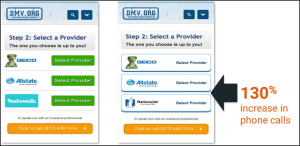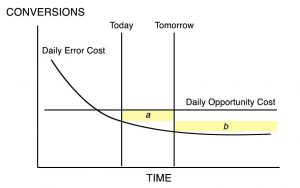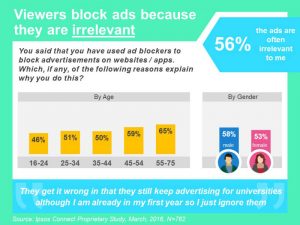
You’ve heard the phrase, “deliver the right message at the right time.” Today, marketers have another thing to get right: the environment. The environment is the location where you as a marketer reach your customers, i.e. a customers’ smartphone, your brand’s website, or an email. There is magic in delivering the right message to the right customer, in just the right environment. Adam Marchick knows this well—he founded Kahuna, a mobile marketing automation platform because of it.
I interviewed Adam to learn more about engaging users across different devices in different environments. Before Kahuna, Adam was an early member of the growth team at Facebook and funded mobile enterprise companies at Menlo Ventures and Bain Capital Ventures.
Sean: How has today’s multi-device world affected the way brands and apps approach user engagement?

Adam: The multi-device world has disrupted marketing and forever changed how brands communicate with customers. The mobile ecosystem is now infinitely more complex, as you can no longer assume that one person has only one device. Traditional marketing tactics in today’s multi-device world mean that your users will consistently receive mis-personalized, duplicate messages. As such, we are seeing a fundamental shift toward “person-based marketing”—marketing that takes into account which devices belong to which users—so marketers can appropriately personalize their mobile communications.
What makes a successful mobile engagement marketing strategy?
Successful mobile engagement marketing is all about understanding your users and engaging with them in a way that enhances their mobile experience. This requires that you have a marketing strategy that treats your users like real people – people with varying affinities, preferences, and interests. Personalization is key.

One crucial component of personalization is engagement mapping —personalized messaging based on users’ engagement state. Engagement mapping allows you to tailor your communication to each user’s real-time engagement level with your brand. (Here is a description of each engagement state.) For example, if a user is new to your mobile experience, they need to be strategically onboarded, not bombarded with information overload that causes them to uninstall your application. And a VIP user should receive very different messaging from a once-active, now dormant user. Successful mobile-focused companies engage with their mobile users differently at every stage of the lifecycle.
How should companies optimize their marketing for mobile web and mobile apps?
The mobile experience was ten years in the making, but boy is it coming on strong now. Mobile is fundamentally different, and every mobile marketing team needs a mobile-specific approach to be successful in this new environment.
For example, it does not work to simply translate email marketing best practices to mobile marketing. Email marketing is largely a volume business, and the “when in doubt, send it out” strategy is extremely dangerous when applied to mobile. When a person receives a generic email, they ignore it. When a person receives a generic push notification, they uninstall your app. (Read more in this article, 5 Things That Will Ruin Your Push Notification Strategy.) These blast notifications are the junk mail of the mobile world, and users have zero tolerance for them. On mobile, there’s elegance in knowing when not to send a message. Successful mobile marketers makes every message count.
Can you give an example of companies who have seen success marketing across platforms and devices?
Yummly, an online recipe service, has taken a very sophisticated approach to mobile marketing. Given the cross-platform nature of their service (they have a website, mobile website, and multiple native apps), Yummly uses push notifications to create a cohesive brand experience for users across their multiple apps and websites. They use push notifications to inspire users to take the key in-app actions that extend user lifetime value—actions like “adding dietary preferences”, “saving favorite recipes”, and “adding recipes to their grocery carts”.
To ensure the customer experience is protected along the way, every message is personalized and relevant—no user will ever receive a push notification about an action that they’ve already done or a feature that they’ve already tried. For example, if a user has added a recipe to favorites on the web, Yummly knows this and won’t send them a notification.

Do companies agree that cross-device, cross-platform marketing is important? What are the issues they face when setting up campaigns?
The vast majority of mobile-focused companies and apps are approaching cross-device, cross-platform marketing as a priority, not an option. The #1 challenge we see facing them is the ability to send personalized messages based on what users are doing across platforms and devices. For example, let’s say a person adds an item to their digital shopping cart via the website or mobile website. How and when do you trigger a push notification to prompt them to check out via the mobile app?
A best practice is to answer the questions “What do we want the user to do?” and “What is the best way to get them to do this without compromising the user experience?” For example, the mobile app is typically the optimal purchasing experience, so if a user has the app installed, they should receive a push notification referencing the specific item waiting for them in their cart. If the user doesn’t have the mobile app, it’s best to send them an email or web message.
The goal of these mobile messages is always to provide valuable content and a positive user experience. Users have zero tolerance for marketing “spam” sent via mobile, so it is critical that companies have a way to engage them in a relevant, contextual way.
Business Articles | Business 2 Community
(408)
Report Post






